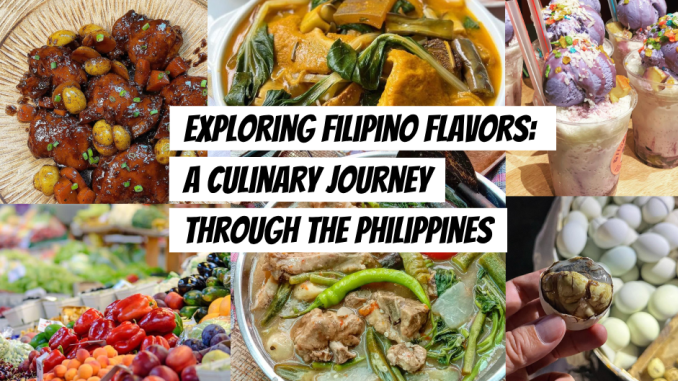
The Philippines, with its stunning landscapes, rich history, and warm-hearted people, offers a culinary experience like no other. This archipelago in Southeast Asia is a paradise for food enthusiasts, boasting a diverse range of flavors that mirror its multicultural heritage. Join us on a delectable journey as we explore the vibrant and mouthwatering world of Filipino cuisine. In this blog post, we will take you through the iconic dishes, regional specialties, and the key ingredients that make Filipino flavors truly exceptional.
A Taste of Tradition: Adobo
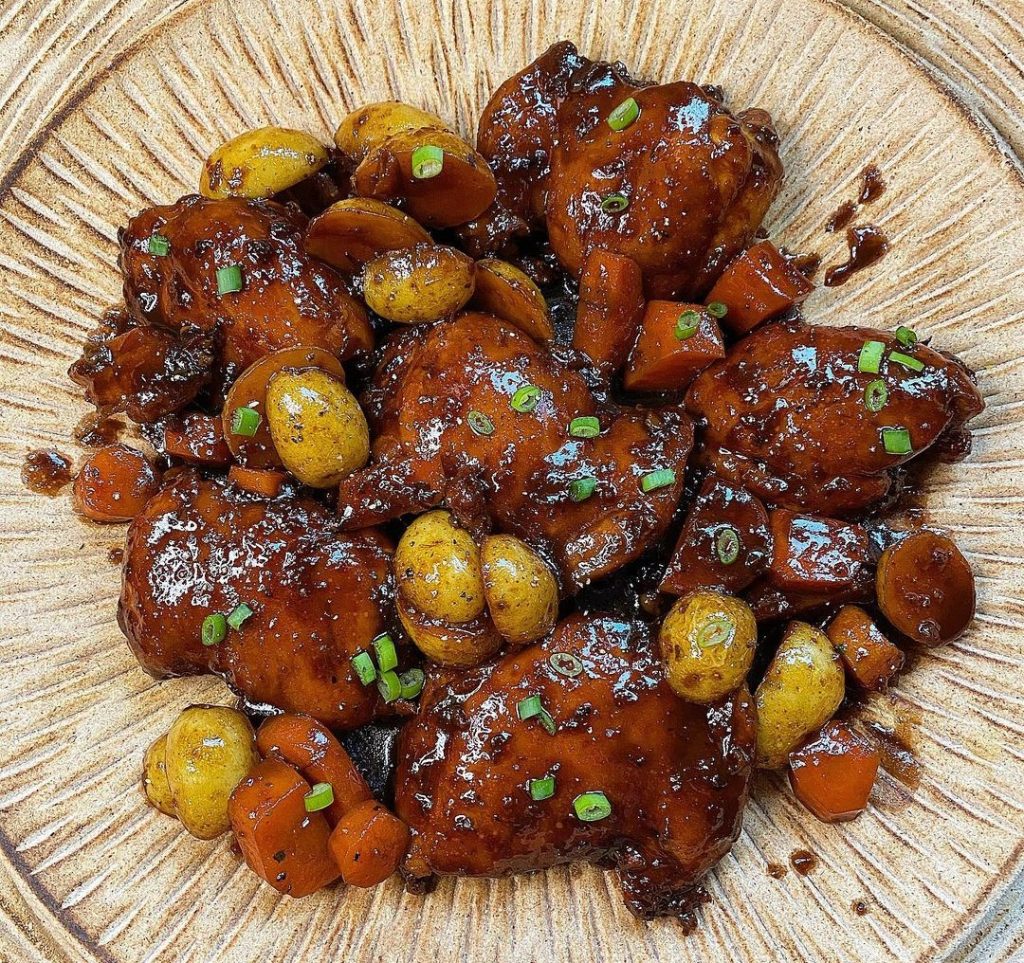
When it comes to Filipino cuisine, one cannot overlook the iconic dish – Adobo. This flavorful dish embodies the essence of Filipino cooking. The key ingredients are chicken, pork, or a combination of both, marinated in a mixture of soy sauce, vinegar, garlic, bay leaves, and black peppercorns. The result is a tender and savory delight that will have you craving for more.
Exploring the Exotic: Balut
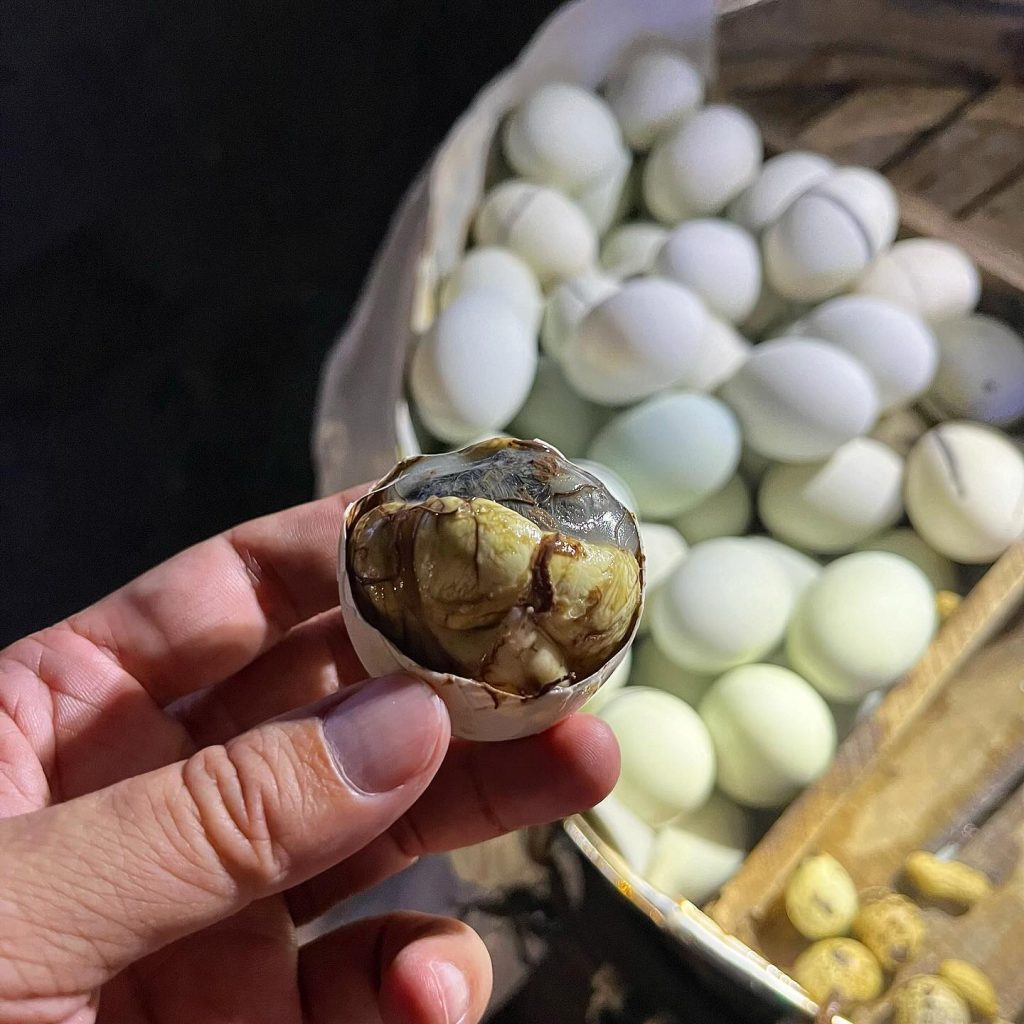
For the adventurous eaters out there, Balut is an exotic delicacy that you must not miss. This street food favorite is a fertilized duck egg with a nearly developed embryo inside. While it might sound daunting, the flavor is a mix of richness and texture that will leave your taste buds intrigued.
Regional Delights: Sinigang, Kare-Kare, and Laing
Filipino cuisine is a tapestry of regional specialties. Sinigang, a sour soup made from tamarind, tomatoes, and various vegetables, is popular in Luzon.
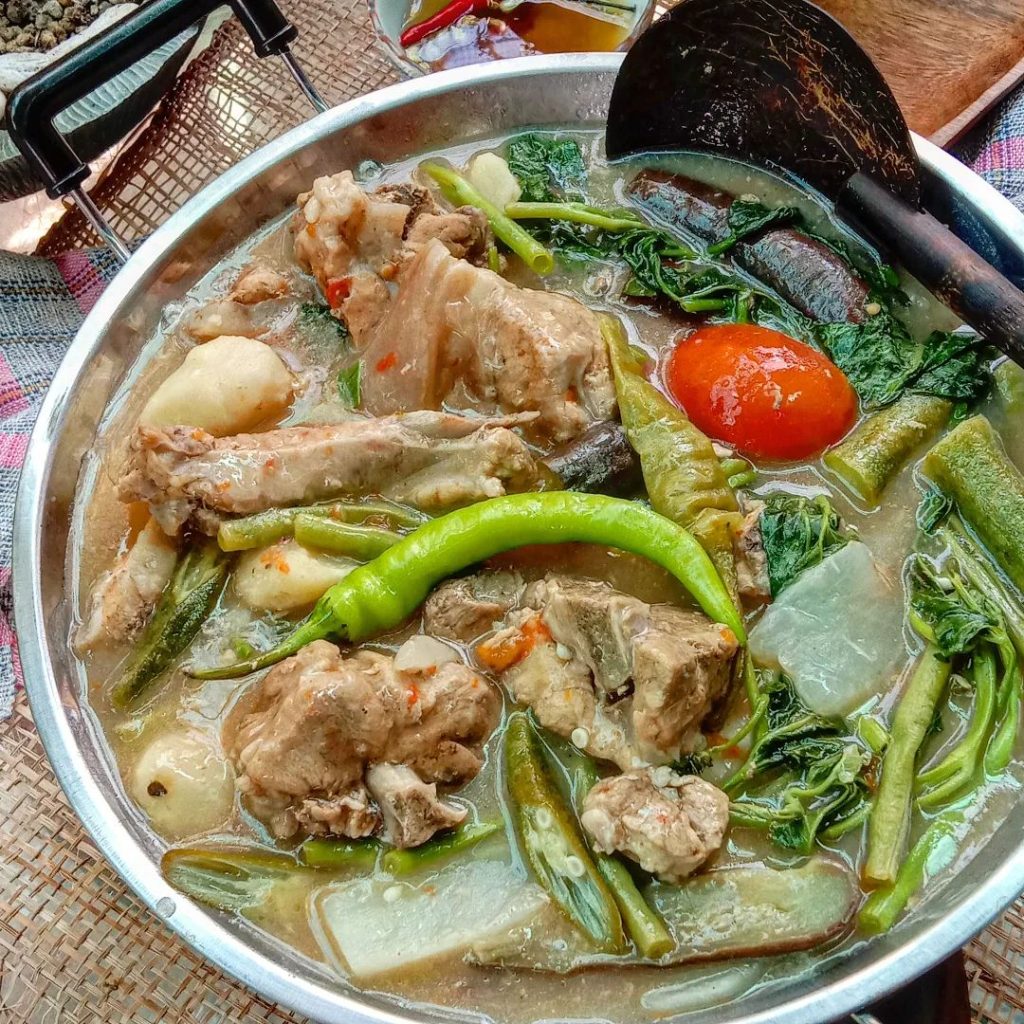
Meanwhile, Kare-Kare, a peanut stew with oxtail and vegetables, is a beloved dish from Pampanga.
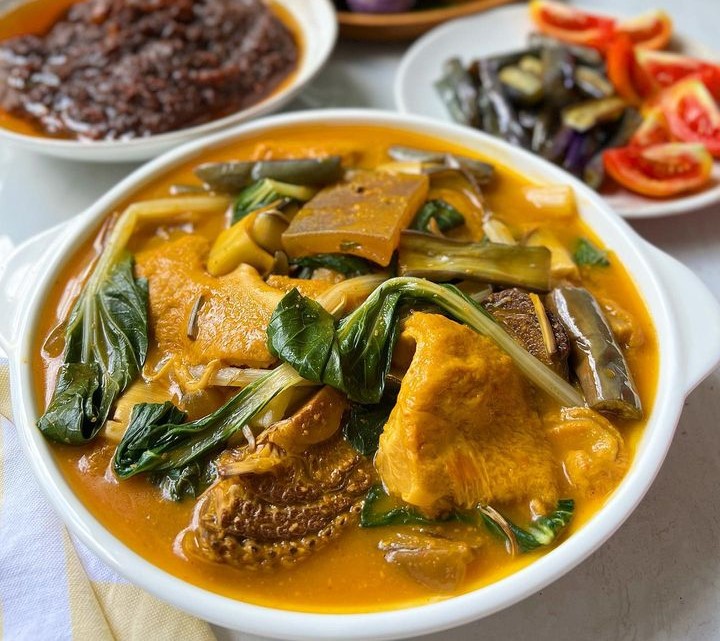
Laing, a spicy dish made from dried taro leaves, coconut milk, and chilies, hails from the Bicol region.
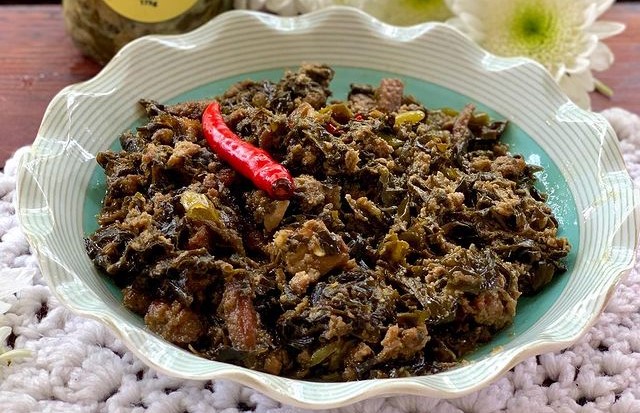
These dishes showcase the diversity of flavors that can be found within the Philippines.
Satisfying Your Sweet Tooth: Halo-Halo

No culinary journey through the Philippines is complete without indulging in a cool and sweet treat – Halo-Halo. This popular dessert is a delightful mishmash of ingredients, including crushed ice, sweetened fruits, jellies, and leche flan, all topped with a scoop of ube (purple yam) ice cream. It’s a refreshing way to beat the tropical heat while savoring an explosion of flavors in every spoonful.
Market Finds: Fresh and Exotic Ingredients
A trip to a Filipino market will open your eyes to a world of fresh and exotic ingredients. From the aromatic pandan leaves and lemongrass to the pungent bagoong (fermented shrimp paste) and the sweet calamansi, the Philippines offers a plethora of unique flavors that are integral to its cuisine.

Exploring Filipino flavors is not just about tasting exquisite dishes; it’s about immersing yourself in a rich culinary culture that reflects the country’s history, geography, and people. The Philippines’ culinary heritage is a tapestry of unique flavors and regional specialties that continue to captivate food lovers from all around the world. So, whether you’re enjoying the iconic Adobo, trying the exotic Balut, savoring regional dishes, or cooling off with a sweet Halo-Halo, this culinary journey is sure to leave you with a taste of paradise.
Looking for other Lutong Bahay Recipes to try on? Feel free to check out our ulam recipes, desserts recipes and snacks recipes.
Some visual and written contents are copyrighted to their respective and considerate owners. We do not claim that these recipes or photos are proprietary to us. If this is yours and you would like it to be removed and not shared with others, please let us know by sending an email to contact @ lutongbahayrecipe.com, you may use our website contact form or by sending a message on our Facebook page. Read our disclaimer.

Leave a Reply